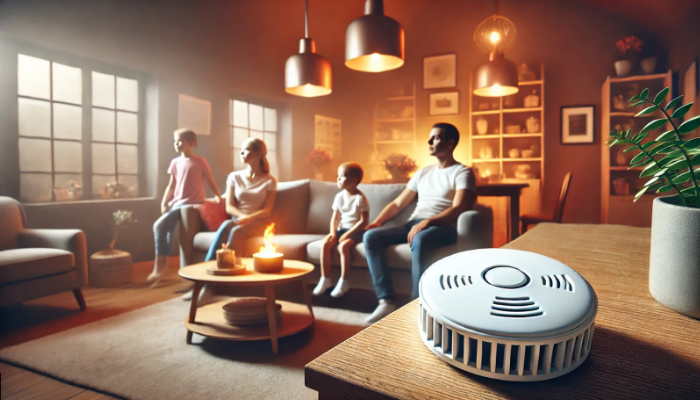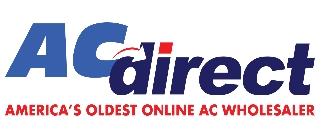How to Prevent Carbon Monoxide Leaks in Your Furnace
-
 By
Michael Haines
By
Michael Haines
- Dec 30, 2024

Carbon monoxide (CO) is a colorless, odorless gas with serious health risks. It is a byproduct of gas combustion, meaning furnaces, water heaters, and other gas-powered appliances can become sources of CO leaks if improperly maintained. Understanding how to prevent these leaks is essential for ensuring the safety and well-being of your household. This guide outlines essential steps and best practices to prevent carbon monoxide leaks from your furnace.
Regular Maintenance: The Foundation of Safety
Regular maintenance is not just good practice; it's the cornerstone of furnace safety. Minor issues can escalate without it, leading to potential carbon monoxide leaks.
Annual Inspections by Professionals
Hiring a qualified technician to inspect your furnace annually is non-negotiable for safety. During these inspections, professionals check the heat exchanger for cracks, which are a leading cause of CO leaks. A compromised heat exchanger allows exhaust gases to mix with the air circulating in your home. Technicians also clean the furnace, removing soot and debris that can obstruct airflow, cause overheating, and increase the likelihood of leaks.
Cleaning and Adjustments
Routine cleaning extends beyond just removing debris. Cleaning the burners ensures efficient combustion, reducing the risk of incomplete burning, which can lead to carbon monoxide production. Technicians also calibrate the furnace to maintain optimal performance, ensuring the system operates safely.
Why Maintenance Matters
Neglecting maintenance can lead to gradual wear and tear. For example, metal fatigue in the heat exchanger can create cracks over time, especially when exposed to temperature fluctuations. Annual checks mitigate this risk, ensuring any potential issues are addressed promptly.

Professional installers follow local building codes, ensuring proper clearance around the furnace and adherence to safety standards. These codes are designed to minimize risks associated with gas appliances, including CO leaks.
Carbon Monoxide Detectors: Your First Line of Defense
Despite all preventive measures, accidents can happen. Installing carbon monoxide detectors provides extra protection, alerting you to dangerous CO levels before they become life-threatening.
Placement Guidelines
Install CO detectors on every level of your home, especially near sleeping areas. Carbon monoxide is slightly lighter than air, so detectors should be placed at eye level or as the manufacturer recommends. Avoid placing them near vents, windows, or humid areas like bathrooms, as these conditions can interfere with accurate readings.
Types of CO Detectors
There are three main types of CO detectors:
- Battery-powered detectors are easy to install and work during power outages./span>
- Plug-in detectors with battery backup offer convenience but rely on an electrical outlet.
- Smart CO detectors connect to your home’s Wi-Fi and send alerts to your phone, ensuring you're informed even when away.
Maintenance of Detectors
Test your CO detectors monthly and replace batteries at least once a year. Most detectors have a lifespan of five to seven years, after which they should be replaced to ensure reliability.
Ventilation Checks: Ensuring Proper Exhaust
Proper ventilation is crucial for expelling harmful gases like carbon monoxide from your furnace. Without adequate venting, these gases can return to your home, creating a hazardous environment.
Inspect Vent Pipes
Check vent pipes regularly for signs of corrosion, holes, or blockages. Over time, vent pipes can become obstructed by debris, bird nests, or even snow during winter. These obstructions prevent exhaust gases from escaping, increasing the risk of CO buildup indoors.
Examine Chimneys
If your furnace is connected to a chimney, ensure it is clean and free of creosote or soot buildup. Creosote can block airflow and cause exhaust gases to re-enter your home. Annual chimney inspections and cleaning are essential, mainly if you use other gas-burning appliances.
Proper Placement of Vents
Ensure exterior vents are not near windows, doors, or air intake vents. Exhaust gases can re-enter your home through these openings, posing a safety risk.

Recognize Symptoms of Carbon Monoxide Poisoning
Even with all safety measures in place, it’s vital to be informed and recognize the symptoms of carbon monoxide poisoning. Early detection can save lives.
Common Symptoms
- Mild exposure: Headache, dizziness, fatigue, and nausea.
- Moderate exposure: Confusion, rapid heartbeat, and difficulty breathing.
- Severe exposure: Loss of consciousness, seizures, and potentially death.
Symptoms often mimic the flu but without fever. If multiple household members experience these symptoms simultaneously, suspect CO poisoning and evacuate immediately.
What to Do in an Emergency
If you suspect carbon monoxide exposure:
- Leave the house immediately and move to fresh air.
- Call emergency services.
- Only re-enter the home once professionals have inspected and resolved the issue.
Additional Best Practices for CO Prevention
Preventing carbon monoxide leaks requires a holistic approach that extends beyond the furnace. Incorporate these additional measures to enhance safety:
Use Ventilation Fans
Use kitchen and bathroom exhaust fans to improve air circulation, especially when using gas-powered appliances. Proper ventilation reduces the risk of CO accumulation.
Inspect Gas Appliances
Other gas appliances, such as water heaters and stoves, can also contribute to carbon monoxide leaks. Regularly inspect and maintain these appliances to ensure safe operation.
Avoid Using Generators Indoors
Portable generators produce high levels of carbon monoxide. Continuously operate them outdoors, away from windows and doors, to prevent exhaust gases from entering your home.
The Importance of Education and Awareness
Educating your household about carbon monoxide risks and safety measures is crucial. Children and elderly individuals are particularly vulnerable to CO poisoning due to their limited ability to recognize symptoms or evacuate promptly.
Family Emergency Plans
Create a family emergency plan that includes the following:
- Recognizing CO poisoning symptoms.
- Knowing evacuation routes.
- Testing CO detectors as part of regular safety drills.
Community Awareness
Encourage neighbors and community members to install CO detectors and maintain their appliances. A well-informed community is better equipped to prevent CO-related incidents.
Ensuring a Safe Home Environment
Preventing carbon monoxide leaks in your furnace requires consistent attention and proactive measures. Each step contributes to a safer home, from regular maintenance and proper installation to the strategic use of carbon monoxide detectors. You can protect your household from carbon monoxide's invisible but deadly threat by staying vigilant. Prioritize safety, and your furnace will continue to provide comfort without compromise.
Is your furnace outdated or unreliable? Explore AC Direct’s range of high-quality gas furnaces and electric furnaces designed for safety and efficiency.

 and now, NASCAR Racing Sponsor
and now, NASCAR Racing Sponsor










